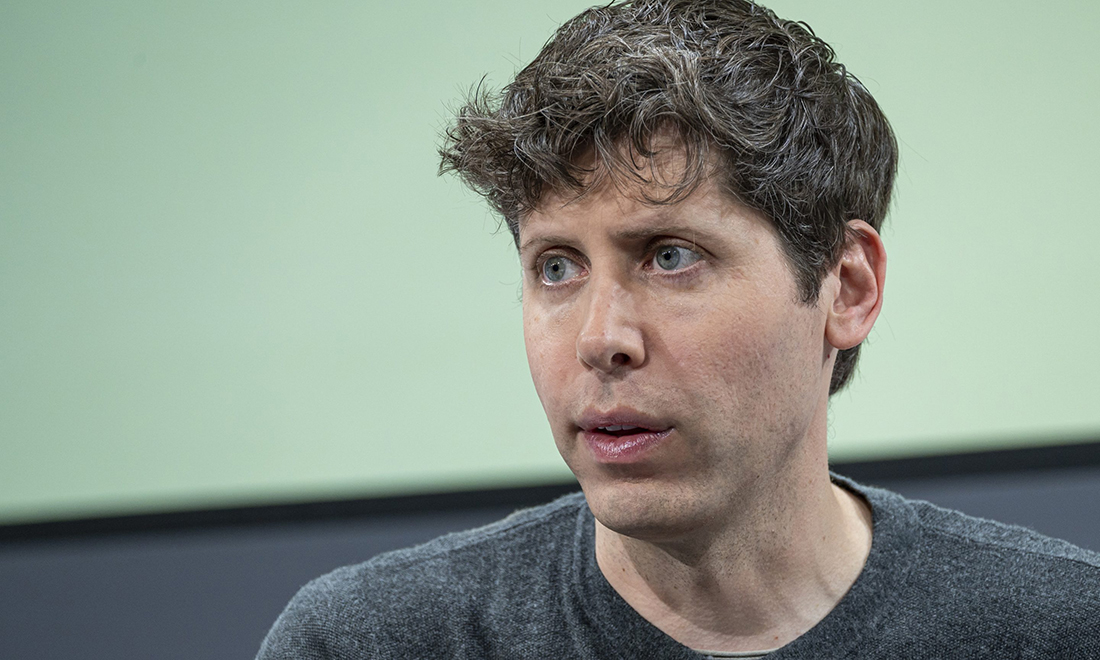OpenAI创始人表达对硅谷不满

OpenAI的首席执行官萨姆·奥尔特曼绝对是硅谷的内部人士,这一点毋庸置疑。他领导的公司开发出了人工智能聊天机器人ChatGPT和GPT-4,除此之外,他还是初创公司加速器Y Combinator的负责人。
然而,虽然奥尔特曼绝对是硅谷的一员,但他对硅谷并不满意。
奥尔特曼在今年9月6日的一集播客节目《In Good Company》中说:“我在说这些话的时候,知道这会显得我很傲慢,但这并非我的本意。硅谷的公司曾经做出过非常出色的研究……但已经很久没有看到这样的景象了。”
播客主持人尼古拉·坦根对这种观点表示意外。坦根是挪威主权财富基金挪威央行投资管理公司(Norges Bank Investment)的首席执行官。
奥尔特曼回应称,硅谷确实有出色的产品创新,但他反问道:“在OpenAI之前,硅谷公司最近的伟大科技突破是什么?”
关于科技突破背后的文化消失的原因,奥尔特曼称:“我用大量时间思考这个问题,但我也不能完全理解。”
他表示,原因之一是现在的科技公司不给研究团队足够的自由。奥尔特曼指出,相比之下,在OpenAI,“我们为公司设定了高级别的愿景和希望实现的目标,除此之外,研究人员非常自由。”
他表示,研究人员能够探索不同的方向。在确定了最有前途的方向后,OpenAI可以说服“几乎整个研究团队提供支持”。这样,最终才有了2022年ChatGPT的发布,而ChatGPT也刺激了当前人工智能的蓬勃发展。
奥尔特曼称,硅谷存在的问题之一是“打造一家超高估值的公司变得非常容易,人们对公司的发展和回报周期失去耐心,因此大量资本被投到能够相当可靠地在短期内带来数倍回报的公司……这吸收了大量人才,不过完全是可以理解的。”
他继续说道,大多数大型科技公司都是从产品公司起家,最后才增加“一个运转不太良好的研究实验室”。相反,OpenAI最初就是一家研究实验室。
今年3月,奥尔特曼表示,他对多年来在Y Combinator向初创公司提供的建议“表示严重质疑”,并指出OpenAI在许多方面“都违背了YC的所有建议”。
奥尔特曼在一次Stripe会议上说:“我们花了四年半时间才推出一款产品。我们将成为硅谷历史上资本最密集的初创公司。我们在开发技术的过程中没有想过我们的潜在客户是哪些人,或者客户会将我们的技术用于什么目的。”
OpenAI的联合创始人及总裁格雷戈·布罗克曼也提到了该公司反其道而行的做法。他在今年3月的播客节目《Possible》中表示:“你应该有一个需要解决的问题,而不是一项需要解决方案的技术。”
当然,微软在OpenAI投资数十亿美元,这令其受益匪浅,很少有初创公司能够获得如此巨额的投资。
关于未来,奥尔特曼对坦根表示,他和OpenAI已经过了思考未来路线图的阶段:“我们正在做的许多事情,都超出了硅谷接受的标准观念。我们只想说:‘好吧,我们会努力解决问题,不断尝试。如果我们做错了,那又怎样……我们又不是搞砸了已经被解决的问题。’”(财富中文网)
译者:刘进龙
审校:汪皓
OpenAI的首席执行官萨姆·奥尔特曼绝对是硅谷的内部人士,这一点毋庸置疑。他领导的公司开发出了人工智能聊天机器人ChatGPT和GPT-4,除此之外,他还是初创公司加速器Y Combinator的负责人。
然而,虽然奥尔特曼绝对是硅谷的一员,但他对硅谷并不满意。
奥尔特曼在今年9月6日的一集播客节目《In Good Company》中说:“我在说这些话的时候,知道这会显得我很傲慢,但这并非我的本意。硅谷的公司曾经做出过非常出色的研究……但已经很久没有看到这样的景象了。”
播客主持人尼古拉·坦根对这种观点表示意外。坦根是挪威主权财富基金挪威央行投资管理公司(Norges Bank Investment)的首席执行官。
奥尔特曼回应称,硅谷确实有出色的产品创新,但他反问道:“在OpenAI之前,硅谷公司最近的伟大科技突破是什么?”
关于科技突破背后的文化消失的原因,奥尔特曼称:“我用大量时间思考这个问题,但我也不能完全理解。”
他表示,原因之一是现在的科技公司不给研究团队足够的自由。奥尔特曼指出,相比之下,在OpenAI,“我们为公司设定了高级别的愿景和希望实现的目标,除此之外,研究人员非常自由。”
他表示,研究人员能够探索不同的方向。在确定了最有前途的方向后,OpenAI可以说服“几乎整个研究团队提供支持”。这样,最终才有了2022年ChatGPT的发布,而ChatGPT也刺激了当前人工智能的蓬勃发展。
奥尔特曼称,硅谷存在的问题之一是“打造一家超高估值的公司变得非常容易,人们对公司的发展和回报周期失去耐心,因此大量资本被投到能够相当可靠地在短期内带来数倍回报的公司……这吸收了大量人才,不过完全是可以理解的。”
他继续说道,大多数大型科技公司都是从产品公司起家,最后才增加“一个运转不太良好的研究实验室”。相反,OpenAI最初就是一家研究实验室。
今年3月,奥尔特曼表示,他对多年来在Y Combinator向初创公司提供的建议“表示严重质疑”,并指出OpenAI在许多方面“都违背了YC的所有建议”。
奥尔特曼在一次Stripe会议上说:“我们花了四年半时间才推出一款产品。我们将成为硅谷历史上资本最密集的初创公司。我们在开发技术的过程中没有想过我们的潜在客户是哪些人,或者客户会将我们的技术用于什么目的。”
OpenAI的联合创始人及总裁格雷戈·布罗克曼也提到了该公司反其道而行的做法。他在今年3月的播客节目《Possible》中表示:“你应该有一个需要解决的问题,而不是一项需要解决方案的技术。”
当然,微软在OpenAI投资数十亿美元,这令其受益匪浅,很少有初创公司能够获得如此巨额的投资。
关于未来,奥尔特曼对坦根表示,他和OpenAI已经过了思考未来路线图的阶段:“我们正在做的许多事情,都超出了硅谷接受的标准观念。我们只想说:‘好吧,我们会努力解决问题,不断尝试。如果我们做错了,那又怎样……我们又不是搞砸了已经被解决的问题。’”(财富中文网)
译者:刘进龙
审校:汪皓
OpenAI CEO Sam Altman is undeniably a Silicon Valley insider. In addition to heading the company behind AI chatbots ChatGPT and GPT-4, he also led the startup accelerator Y Combinator.
But while he’s very much a part of Silicon Valley, he’s not satisfied with it.
“I say this realizing it’s going to come across as arrogant, and I don’t mean it that way,” he said during a September 6 episode of the In Good Company podcast. “There used to be great research that happened in companies in Silicon Valley…There [has] not been for a long time.”
Podcast host Nicolai Tangen, CEO of Norwegian sovereign wealth fund Norges Bank Investment, expressed surprise at this viewpoint.
Altman replied there’s good product innovation in Silicon Valley, but asked rhetorically, “Before OpenAI, what was the last really great scientific breakthrough that came out of a Silicon Valley company?”
As for why the culture behind such breakthroughs had disappeared, he said, “I have spent so much time reflecting on that question. I don’t fully understand it.”
One reason, he suggested, is that technology firms today don’t give their research teams enough freedom. By contrast, at OpenAI, “we set a very high-level vision for the company and what we want to achieve, and beyond that researchers get just a huge amount of freedom,” he said.
The researchers were allowed to explore different directions, he noted. When the most promising one became apparent, OpenAI was able to persuade “almost the entire research brain trust to get behind it,” leading eventually to last year’s release of ChatGPT, which helped spark the current boom in artificial intelligence.
One problem in Silicon Valley, he said, is that “it got so easy to make a super valuable company, and people got so impatient on timelines and return horizons that a lot of the capital went to these things that could just, you know, fairly reliably multiply money in a short period of time…That sucked up a lot of talent, very understandably.”
Most big tech companies, he continued, start as a product company and eventually add “a research lab that doesn’t work very well.” OpenAI, by contrast, started as a research lab.
In March, Altman said he was “seriously questioning” the advice he’d given to startups for years at Y Combinator, noting various ways that OpenAI “went against all of the YC advice.”
He said at a Stripe conference: “It took us four and half years to launch a product. We’re going to be the most capital-intensive startup in Silicon Valley history. We were building a technology without any idea of who our customers were going to be or what they were going to use it for.”
Greg Brockman, OpenAI cofounder and president, has also noted the company’s contrarian approach. “You’re supposed to have a problem to solve, not a technology in search of the solution,” he said on the Possible podcast in March.
Of course, OpenAI has benefited from Microsoft investing billions of dollars into it, a luxury few startups have.
As for the future, Altman told Tangen that he and OpenAI are past the point of thinking there’s a road map to follow: “We’re just doing a bunch of things that are outside of the standard Silicon Valley received wisdom. And so we get to just say, ‘Well, we’re going to figure it out, and we’re going to try things, and if we got it wrong, like, who cares…It’s not like we screwed up something that was already figured out.’”













